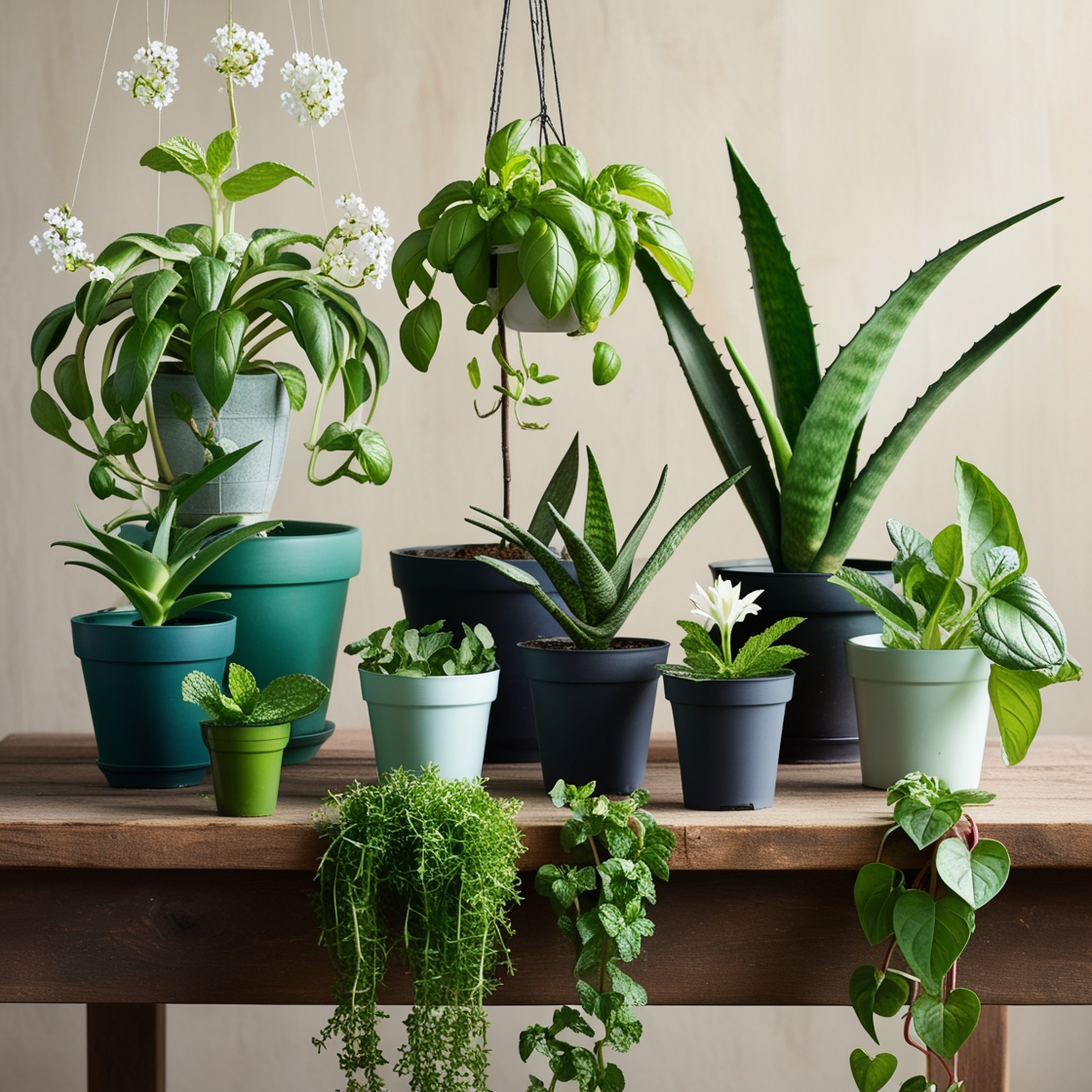Growing indoor plants from seed is an excellent, inexpensive way of introducing greenery into the interior spaces of your home. This article will cover everything you need to know about seeds for indoor plants: What type of seed is best? How do you properly select them? Some germination and growth tips. Whether you are an experienced gardener or just starting, find the guidance you need to have a lively indoor garden.
Why Plant Seeds Indoors?
Indoor plant seeds have some benefits:
- Cheap: Seeds are relatively cheaper than purchasing a ready-grown indoor plant.
- Variety: So many species of plants and their varieties come in seed form.
- Control: Seeds will give you control right from the starting point, so what environment the plant grows into is what you have set up.
- Reward: Nothing is as fulfilling as a small seed developing into an entirely matured plant.
Selecting the Right Seeds for Indoor Plants

The selection of seeds is the most critical for an indoor garden. Here are some of the things that one should look out for in selection:
- Lighting: Choose the type of plant whose light requirement matches the lighting system within the house. This would mean selecting plants whose lighting needs either low Light, medium Light, or bright Light.
- Size: Seslect a mature size plant according to the indoor area.
- Care Level: Some require high maintenance compared to others. The experience level and capability of the person should be used to determine whether they will be able to make regular commitments to care for it.
- Purpose: Decide whether you want ornamental plants, air purifiers, or edible plants like herbs and vegetables.
Popular Indoor Plant Seeds
| Plant Name | Light Requirements | Water Needs | Growth Time | Special Features |
| Spider Plant | Low to Bright | Moderate | 2-3 weeks | Air-purifying, easy to grow |
| Basil | Bright, indirect | Regular | 7-10 days | Culinary herb, aromatic |
| Snake Plant | Low to Bright | Low | 2-4 weeks | Air-purifying, drought-tolerant |
| Mint | Bright, indirect | Regular | 10-15 days | Culinary herb, fast-growing |
| Aloe Vera | Bright, indirect | Low | 2-3 weeks | Medicinal uses, drought-tolerant |
| Peace Lily | Low to Medium | Regular | 10-14 days | Air-purifying, blooms in low light |
| Lettuce | Bright, indirect | Regular | 7-14 days | Edible, fast-growing |
| Pothos | Low to Bright | Moderate | 10-14 days | Air-purifying, low maintenance |
Facts and Figures
- Germination Rate: Good quality seeds germinate at 70-90%.
- Growth Time: Most indoor plants germinate in about 2-4 weeks.
- Air Quality: Spider plants and peace lilies are known to remove harmful toxins from the air.
- Edible Plants: Herbs like basil and mint can be used within a few weeks after planting.
- Popularity: Snake plants and pothos are the most popular houseplants since they require less maintenance.
Advantages and Disadvantages of Producing House Plants from Seeds
Pros
- Cheap: It is cheaper than buying a fully grown plant.
- Many Species: This method covers a wide range of species for different kinds of plants.
- Control: A person controls it from the beginning stage of production.
- Satisfaction: Has satisfaction that one has their product of producing a plant.
Cons
- Time-Wasting: Long time as opposed to typically buying full-grown plants.
- Patience: Something that should be kept consistent.
- Initial Equipment: Requires an initial setup, including seed trays, soil, and correct lighting.
Steps to Grow Indoor Plants from Seeds
- 1Choose the Seeds: Select seeds according to the preferences and growing conditions.
- 2.Prepare the Soil: Use a high-quality, well-draining potting mix.
- 3.Plant the Seeds: Sow the seeds with the recommended depth and spacing.
- 4.Give Light: Place seed trays in a location with enough Light or use grow lights.
- 5.Water on Regular Basis: The soil should be moist, never waterlogged.
- Humidity Support: The seed trays must be covered by plastic to ensure humidity.
- Transfer: Seedlings must be transferred into pots once the leaves become more extensive.
Tips for Successful Germination and Growth
- Fresh Seeds: Germination speed increases while seeds are planted immediately
- Maintaining Constant Moisture: The soil has to be moist and should not dry up. One must always keep the top dressing from drying
- Light: The seedlings must be large enough so that they can tolerate large quantities of Light. The seedlings should not remain leggy
- Temperature Control: The surroundings should be warm and relaxed, according to the variety, so that they can grow.
- Fertilization: Use a balanced, water-soluble fertilizer once seedlings obtain two or more sets of the actual leaves.
Common Mistakes to Avoid
- Too much Water: This creates over-rotating of roots plus leads to diseases caused by the fungi
- Under Lights: Causing undergrowth and lanky appearance for seedlings
- Improper Soil: Garden soil is used instead of potting. This leads to impeded root activities
- Ignoring Plant Needs:Failure to respond according to plant specifications. It is observed that a type cannot be put on similarly to others, and they have different responses.
Conclusion
Growing indoor plants from seeds is one of the most satisfying and cost-effective ways to add more greenery to your indoor space. Proper selection of seeds can provide a variety of choices that can contribute to quality air, fresh herbs, or merely add beauty to a house. Patience and good care will make your plants bloom and give you constant joy and satisfaction with answers to the questions.
Q: Which are the easiest for a person to grow from seed indoors?
A: From seed indoors, spider plants, basil, and mint are some of the easiest.
Q: How long does it take to germinate?
A: Time to germinate varies, but all of these seeds germinate indoors between 7-14 days.
Q: Should I use regular garden soil for starting indoor plant seeds?
A: It is good to use a potting mix that drains better than a layer of garden soil because drainage and aeration are critical.
Q: What is the frequency of water application to seeds of an indoor plant?
A: Keep the soil moist, but avoid waterlogging. Moisture level daily checks.
Q: Does seed germination, in the case of indoor plants, require Light?
A: Some seeds require some break of photoperiod to be visible to germinate, whereas others do not need to germinate. Consult your literature for specific requirements.
References
- Gardening Know-How – Starting Seeds Indoors
- The Spruce – Indoor Seed Starting
- University of Minnesota Extension – Starting Seeds Indoors
- Royal Horticultural Society – Growing from Seed
Follow this guide to grow indoor plants from seeds and beautify your home with lovely and helpful greenery.

